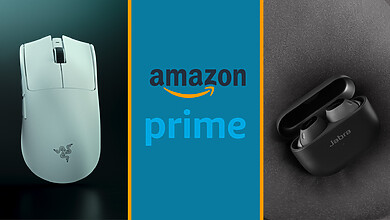In Nikon’s current slate of mirrorless cameras, the Nikon Z 50 is the best one thus far. This is not a slight towards the quality of their other mirrorless cameras, especially as a proud owner of a Z 6 myself. But for its price and feature set, the Z 50 is the perfect camera for budding photographers.
Upon receiving the Nikon Z 50, one thing was made apparent; this camera is tiny. I’ve previously mentioned how the Z 7 had a smaller body compared to DSLRs — the Z 50 is even smaller. It is essentially a further shrunken-down version of the Z 6 and Z 7; keeping the general shape but is equipped with a smaller battery and grip.
What you get in return is a camera that feels almost weightless, even with the accompanying kit lens (which is also small). The Nikon Z 50 is advertised to be travel-friendly, and it certainly lives up to that moniker; I’ve had no trouble lugging it around.
The grip itself feels better than many other APS-C mirrorless cameras, with a deeper and more pronounced grip hold, making it easier to handle the device. As someone with average-sized hands though, I regularly find my pinky slipping out of the grip while shooting due to the Z 50’s small size. It is an inconvenience, yes, but ultimately, it is an issue that plagues all mirrorless cameras, and one that can be overcome by spending a bit more on an extension grip.
Battery life is nothing to shout about, but it should easily be able to withstand a day’s worth of shooting. On testing the camera while travelling in South Korea, its battery was still half-full even after taking over 500 shots. This is made even more impressive by the fact that it was during the winter period, which is infamous for causing decreased battery life.
If the battery does go flat while you are outside, you can charge it conveniently with a portable power bank, though only through micro-USB, which means you’ll need to carry around extra cables if you predominantly use electronics with USB-C as I do; an aspect that irked me throughout my trip.
The kit lens that comes with the Nikon Z 50 should be a suitable enough lens for you to use, covering all of the focal ranges that you would need. Though the bokeh is not something you can replicate from a prime lens, the versatility of the 16mm-50mm kit lens was enough for me to keep it on my Z 50 throughout my trip, even though I brought along additional 50mm and 50mm-250mm lenses.
On the subject of lenses, there are currently only two lenses for Nikon’s APS-C cameras that are specifically built for the Nikon Z 50 — the Nikon 16-50 and 50-250. Though they are variable aperture lenses, they come with VR (Vibration Reduction) built in and are, in my personal opinion, sharper than Nikon’s DSLR kit lens for APS-C.
The Nikon Z 50 also comes equipped with a 180 degrees tilting touchscreen monitor; something that neither the Z 6 nor the Z 7 have. In comparison, taking selfies becomes much easier.
I’ve spoken at length about the camera’s features, but how are its shooting capabilities? Well, the Nikon Z 50 comes with a 20.9-megapixel sensor — similar to that of the Nikon D500, Nikon’s flagship APS-C DSLR camera. What that gets you are excellent quality JPEGs that require little to no editing, especially if you mean to post them on Instagram or have them as family photos.
The camera is not quite up to scratch with full-frame sensors in the amount of graininess but it isn’t that noticeable while taking photos. It shares the great dynamic range found in most Nikon cameras as well. I was able to pull back the exposure of a picture that was 2 stops overexposed without it appearing with noise or showing any artefacts.
The main reason I love the Nikon Z 50 though, is its usability. Everything from the menus and buttons to its touchscreen and face/eye detection autofocus functions were simple and easy to use; something that beginners would appreciate and easy for seasoned photographers to get used to.
It also works great in low light conditions, where I rarely had to manually set the focus point — all I did was set it to auto-area AF and the camera did the work. It doesn’t work all the time perfectly, and there were photos that missed the mark, but that’s a rare occurrence.
Without any hesitation, the Nikon Z 50 is a camera I would whole heartily recommend to people. The amazing autofocus system combined with its compact body for travel and astounding photo quality makes for a compelling reason to have it as your travel camera. Priced at S$1,499, it performs far better than what it costs. I will look to snag another one when I go travelling again.
Photos by Darren Chiong of the DANAMIC team.




